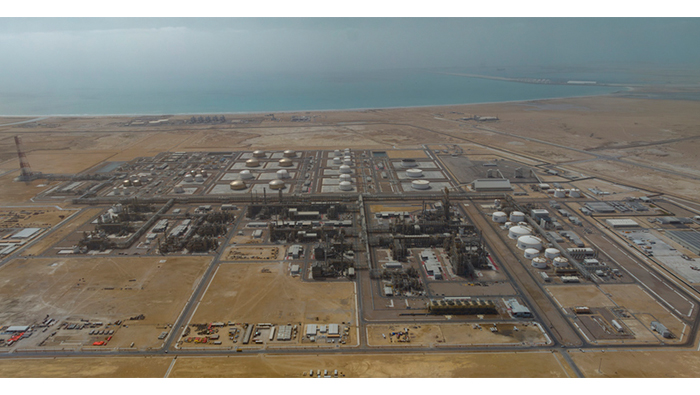
Muscat: S&P Global Ratings revised its outlook on Oman to positive from stable and fixed the credit rating level at ‘BB+’.
“The positive outlook reflects our view that the government’s balance sheet will strengthen the economic reform programme and lead to faster-than-expected deleveraging in many state-owned enterprises (SOEs), without dampening economic growth outcomes,” S&P said on Friday.
“This would strengthen the economy’s resilience to adverse oil price shocks,” it further added.
According to the international rating agency, this upgrade was due to the continuous improvement in the Sultanate’s public financial performance indicators in addition to government efforts to reduce net public debt.
The outlook revision reflects ongoing improvements in Oman’s government balance sheet, the agency said, adding that “We estimate the government’s budget surplus over 2023 at 2.6 percent of gross domestic product (GDP). Net government debt declined to an estimated 2.4 percent of GDP compared with 7.7 percent in 2022.”
“With forecast budget surpluses averaging 1.2 percent of GDP over 2024-2027, supported by our assumption that the Brent oil price will average $85 per barrel in 2024 before modestly decreasing to $80 per barrel through 2027, the government is well placed to continue reducing external debt or accumulate assets,” S&P said in its report.
State-owned enterprises (SOEs) significantly influence the Omani economy, in both the hydrocarbon and non-hydrocarbon sectors. Oman effectively reorganised its SOE sector as part of a broader structural reform programme. The government is reducing its footprint in the economy, to move from owner to regulator, via asset sales to help develop the non-hydrocarbon private sector and attract foreign direct investment (FDI).
“We view the reorganisation of the government-related entity (GRE) sector as increasing government oversight, while enabling conditions to be imposed on the individual companies to enhance efficiency and improve their financial positions,” the rating agency further added.
Total SOE debt decreased to $33.9 billion (31 percent of GDP) at year-end 2023 from $34.3 billion (31 percent of GDP) at year-end 2022, after peaking at $35.9 billion (41 percent of GDP) at year-end 2021. “We expect SOE debt to remain broadly flat in nominal terms, but reforms could lead to deleveraging in 2024 and 2025,” S&P said.
“We estimate that real GDP growth decelerated to 1.6 percent in 2023, from a hydrocarbon-driven 9.6 percent in 2022, because of voluntary oil production cuts. We expect growth to average about 2 percent a year over 2024-2027,” S&P said in its report. In the past, public sector spending and investment were significant drivers of growth. Continued deleveraging by the government and in the GRE sector could dampen growth, in the absence of economic reform measures to improve private-sector performance.
Even with reform efforts over the past three years, Oman’s economy remains dependent on the oil sector, which accounts for about 30 percent of GDP, 60 percent of goods exports, and 75 percent of government revenues.
The international credit rating agency further said higher hydrocarbon production will support growth in 2025 and 2026. “We expect the government’s fiscal and economic reform momentum will continue over 2024-2027 and we forecast real GDP will expand by about 2 percent per year on average over 2024-2027.”
The rating agency said that the government has introduced measures to address governance and public finance issues. Along with the introduction of value-added tax (VAT), these include gradual cuts to electricity and water subsidies and a tighter rein on capital and current spending. The authorities have made strides in improving transparency and data disclosure, including by publishing quarterly real GDP data, a yearly international investment position, and an IMF Article IV.
S&P further said, “We forecast general government budget surpluses to average about 1.2 percent of GDP over 2024-2027 and the government reform efforts and favourable oil prices should support budget surpluses. Despite favourable terms of trade over 2024-2027, usable reserves will remain largely unchanged, partly due to government debt repayments.”
“We expect Oman will maintain its currency peg, supported by its accumulated government external assets of about 35 percent of GDP,” the rating agency said.
Oman achieved twin surpluses in 2022 and 2023, following seven years of sometimes substantial budget and current account deficits.
The Omani authorities’ fiscal reforms continue, with ongoing cuts to electricity, water, and waste management subsidies (as those entities work on cost optimisation); public wage reforms; rationalisation of capital spending; and a potential new personal income tax on high earners. The latter would be a first for the GCC region. “As a result, we expect it will be introduced gradually and be relatively low.”
The international rating agency further said that while revenue will remain concentrated on oil and gas receipts, the Omani government has continued to reduce the budget’s reliance on them in line with its medium-term fiscal plan, currently being updated. “We expect the government will focus on improving corporate tax administration and collection to strengthen non-hydrocarbon receipts. It is less likely that government fees or the VAT rate will be raised over our forecast period to 2027. We also do not expect personal income tax on high earners to be introduced before 2025.”
“We expect Opec+ related oil production cuts to keep economic growth low at about 1.4 percent in 2024. Oman is a voluntary adherent to the Opec+ agreement. We expect hydrocarbon sector output to be broadly flat, with the decline in oil production mitigated by an increase in condensate and gas production,” S&P further said.
“A likely increase in hydrocarbon production should spur growth in 2025 and 2026. We forecast the non-hydrocarbon economy will expand by about 2 percent. Credit conditions in Oman remain accommodative and credit to the private sector should help support non-hydrocarbon sector growth in 2024, as it did in 2023,” it further added.